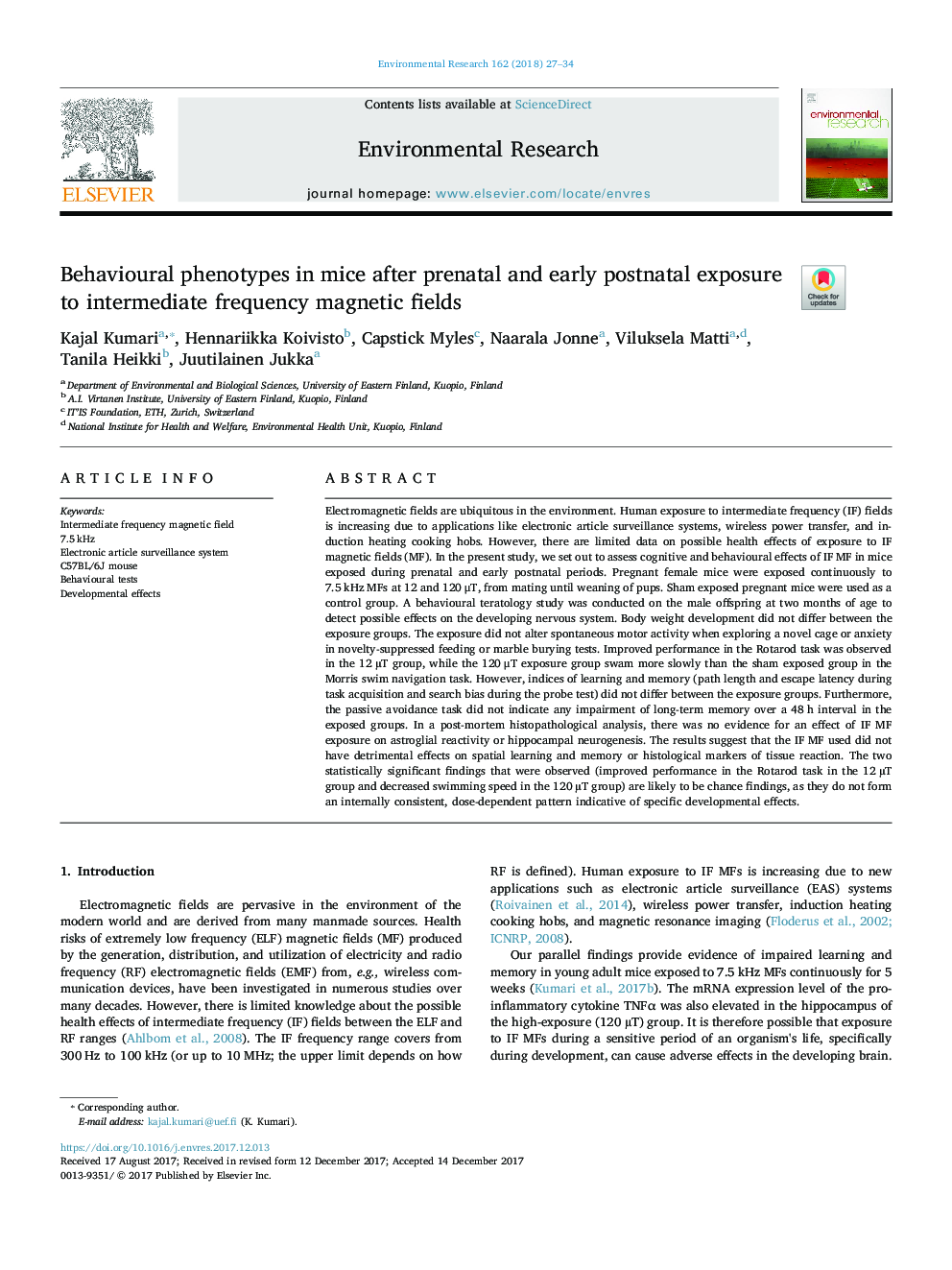| Article ID | Journal | Published Year | Pages | File Type |
|---|---|---|---|---|
| 8869165 | Environmental Research | 2018 | 8 Pages |
Abstract
Electromagnetic fields are ubiquitous in the environment. Human exposure to intermediate frequency (IF) fields is increasing due to applications like electronic article surveillance systems, wireless power transfer, and induction heating cooking hobs. However, there are limited data on possible health effects of exposure to IF magnetic fields (MF). In the present study, we set out to assess cognitive and behavioural effects of IF MF in mice exposed during prenatal and early postnatal periods. Pregnant female mice were exposed continuously to 7.5 kHz MFs at 12 and 120 μT, from mating until weaning of pups. Sham exposed pregnant mice were used as a control group. A behavioural teratology study was conducted on the male offspring at two months of age to detect possible effects on the developing nervous system. Body weight development did not differ between the exposure groups. The exposure did not alter spontaneous motor activity when exploring a novel cage or anxiety in novelty-suppressed feeding or marble burying tests. Improved performance in the Rotarod task was observed in the 12 µT group, while the 120 μT exposure group swam more slowly than the sham exposed group in the Morris swim navigation task. However, indices of learning and memory (path length and escape latency during task acquisition and search bias during the probe test) did not differ between the exposure groups. Furthermore, the passive avoidance task did not indicate any impairment of long-term memory over a 48 h interval in the exposed groups. In a post-mortem histopathological analysis, there was no evidence for an effect of IF MF exposure on astroglial reactivity or hippocampal neurogenesis. The results suggest that the IF MF used did not have detrimental effects on spatial learning and memory or histological markers of tissue reaction. The two statistically significant findings that were observed (improved performance in the Rotarod task in the 12 µT group and decreased swimming speed in the 120 µT group) are likely to be chance findings, as they do not form an internally consistent, dose-dependent pattern indicative of specific developmental effects.
Related Topics
Life Sciences
Environmental Science
Health, Toxicology and Mutagenesis
Authors
Kajal Kumari, Hennariikka Koivisto, Myles Capstick, Jonne Naarala, Matti Viluksela, Heikki Tanila, Jukka Juutilainen,
